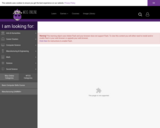
This activity asks a student to use a scientific calculator to do numeric calculations and enter results in a crossword puzzle.
- Subject:
- Mathematics
- Numerical analysis
- Probability
- Trigonometry
- Date Added:
- 10/15/2010

This activity asks a student to use a scientific calculator to do numeric calculations and enter results in a crossword puzzle.
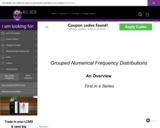
In this interactive object, students read about organizing data in a tabular form. A brief quiz completes the activity. This is the first in a series of six learning objects.

In this interactive object, learners read the definitions of terms associated with the construction of a grouped frequency distribution. A brief quiz completes the activity.

Learners follow steps to establish the lower and upper limits in a spreadsheet.

Students examine an Excel spreadsheet to determine range, class, and width.

Learners follow steps to establish class boundaries and tally the data using a spreadsheet.

Students follow step-by-step directions for entering data into a spreadsheet and reporting the results.

In this interactive object, the learner examines the terms associated with a grouped frequency distribution and follows the steps to construct a grouped frequency distribution using manual methods. Self-check exercises are included.
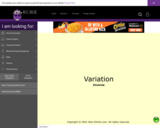
This learning object walks the student through an inverse variation problem.
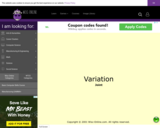
This learning object walks the student through a joint variation problem.
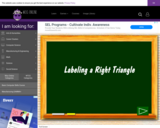
The learner identifies the sides of a right triangle with respect to the angles.

Students apply the Law of Sines in the solution on an oblique triangle when provided with two angles and the side opposite one of the angles.

The target audience of this learning object is trigonometry students who have already learned what a radian is and have already derived the key values of the coordinates associated with common radian units, but now need to practice finding those values on the unit circle. The student does not need to know the definition of the six trig functions to do this activity.

This activity provides instruction and practice problems on the multiplication of monomials.
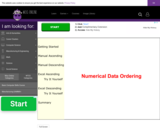
In this interactive object, learners read how to arrange numerical data manually by using ascending or descending order. They also practice arranging the data using a spreadsheet.
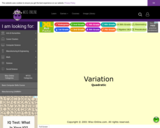
This learning object walks the student through a quadratic variation problem.

Users study a chart containing numbers 1 to 99 and look for trivial palindromes as well as double and triple iteration palindromes. The reverse and add technique is demonstrated.

In this interactive object, learners follow step-by-step instructions for reducing algebraic fractions, which contain addition and/or subtraction, to their simplest form. This activity has audio content.

In this highly interactive and animated object, learners follow a step-by-step process to reduce algebraic fractions, which contain no addition or subtraction, to their simplest, most elementary form. Immediate feedback is provided. This activity has audio content.

In this animated activity, learners listen to instructions for simplifying a complex fraction by finding the least common denominator. This learning object requires a computer that is equipped with speakers.